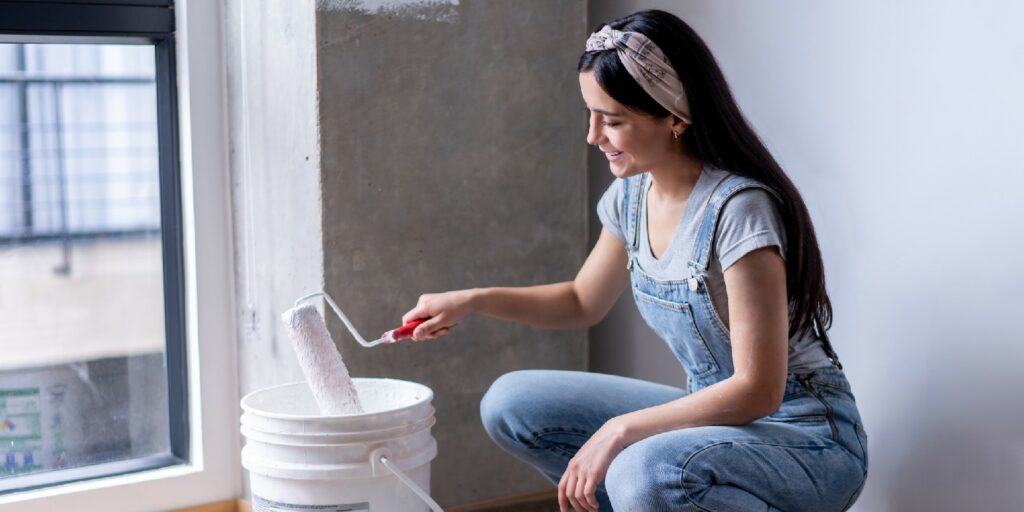Painting 101: Do You Paint Trim or Walls First?

Painting walls and trim can be daunting, and it’s easy to make mistakes if you don’t know what you’re doing. It’s crucial to understand the basics before you start, and one of the most commonly asked questions is whether to paint the trim or the walls first.
In this post, we’ll answer this and other questions you may have about painting walls and trim. We’ll cover all the basics, from paint types to brushes. We’ll also provide tips and tricks to help you get the best results possible. If you’re ready to begin, let’s dive in and learn all about painting.
What You Need To Know About Painting
Painting your home can be one of the most rewarding interior projects you can take on. Color and interior design are essential for creating a space that reflects your style and personality. Though it may seem daunting at first, if you know the basics of painting, you can easily renew any room in your home.
Preparing the Room
Before you start painting, ensure the room is appropriately prepared and ready for a fresh coat of paint. Begin by cleaning your walls with gentle soap and water to remove any dirt or debris. After cleaning, let the walls dry for a few hours before beginning any painting prep work.
Use painter’s tape to tape off items that don’t need to be painted, such as baseboards or door frames. Remove any hardware and doorknobs and protect the floor with a drop cloth or plastic sheeting working. Use sandpaper or a sanding block to smooth the wall surface before starting to paint.
Trim vs. Walls
The general rule of thumb is to start with the trim and then move on to painting the walls since it is easier to cut in around windows, doors, and other trim pieces than to paint them after primer or paint.
If there are window casings or door frames that need painting as well, feel free to use a sanding block before priming them, as this will ensure that the primer and paint get an even finish. After you have finished cutting in around all of the trim pieces, it is time to begin priming and painting the walls.
Painting Basics
Using a quality brush and roller is essential when priming and painting your walls and will help you achieve professional results every time. Choose brushes with bristles made from natural fibers for best results when applying oil-based paints, while synthetic-fiber options are better for latex-based paints. When covering larger surface areas such as walls, consider using a roller so that it will be easier to apply the primer or paint evenly.
Apply an even coat of primer on all surfaces before painting them with your chosen color. Once you finish the primer application, let the primed area dry completely before adding a coat of paint. Drying time could take anywhere from an hour up to several hours depending on environmental factors such as temperature and humidity levels in the room.
Two coats of paint may be necessary for the best results. Apply each coat following the manufacturer’s directions for best results. After applying both coats of paint, let them dry completely before touching up any spots if needed.
Finishing Touches
Once both coats are dry, take some time to inspect each wall closely for missed spots or streaks that may need touch-up work. Touch up your work as needed, and use a small brush for any tight areas.
Painting your space can be critical for improving the look and feel of your whole house. With these simple tips, you can make this process painless. Don’t forget to properly prime your walls and trim, and use the appropriate brushes and rollers depending on the size of the area. Try painting your walls and trim with the tips in this helpful article.
